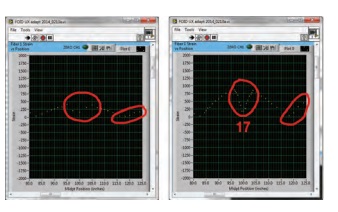Chapter: Fiber Optic Sensing, new invention technology, Research project papers,
Smart Sensing Using Wavelets

Smart Sensing Using Wavelets
These further
refinements to the FOSS technologies are focusing on smart sensing techniques
that adjust parameters as needed in real time so that only the necessary data
are acquired-no more, no less. Traditional FOSS signal processing is based on
Fourier transforms that break up the length of the fiber into equal-length
analysis sections.
If high resolution is
required along one portion of the fiber, the whole fiber must be processed at
that resolution. Wavelet transforms make it possible to efficiently break up
the length of the fiber into analysis sections that vary in length. If high
resolution is required along one
portion of the fiber,
only that portion is processed at high resolution, and the rest of the fiber
can be processed at the lower resolution.
Work to date: The team has developed
a C-language prototype of a wavelet-based signal processing
algorithm. This static form currently operates at half the speed of the
Fourier-based algorithm, but it will be able to operate three to four times
faster once optimized.
Looking ahead: Next steps involve
developing an adaptive form of the wavelet algorithm and optimizing
the code. An adaptive algorithm would automatically change the resolution of
sensing based on real-time data. For example, when strain on a wing increases
during flight, the software will automatically increase the resolution on the
part of the fiber that is under strain.
Benefits
Improved efficiency: Offers
precision measurement only where it is needed rather than on the entire
fiber
Faster
signal processing: Processes data at different resolutions for
specific fiber segments
Applications
Strain sensing
Temperature measurements
Fiber Optic Sensing
Armstrong's portfolio of Fiber Optic Sensing System (FOSS)
technologies offers unparalleled options for high-resolution sensing in
applications that require a unique combination of high-powered processing and
lightweight, flexible, and robust sensors. The system measures real-time
strain, which can be used to determine two-dimensional and three-dimensional
shape, temperature, liquid level, pressure, and loads, alone or in combination.
Initially developed to monitor aircraft structures in flight, the system's
capabilities open up myriad new applications for fiber optics-not just in
aerospace but also for civil structures, transportation, oil and gas, medical,
and many more industries.
The Armstrong approach employs fiber Bragg grating (FBG)
sensors, optical frequency domain reflectometry (OFDR) sensing, and
ultra-efficient algo-rithms (100 samples/second). Engineers are continually
seeking new ways of looking at information and determining what is important.
Armstrong's FOSS technologies focus on critical research needs. Whether it is
used to determine shape, stress, temperature, pressure, strength, operational
load, or liquid level, this technology offers ultra-fast, reliable
measurements.
Related Topics